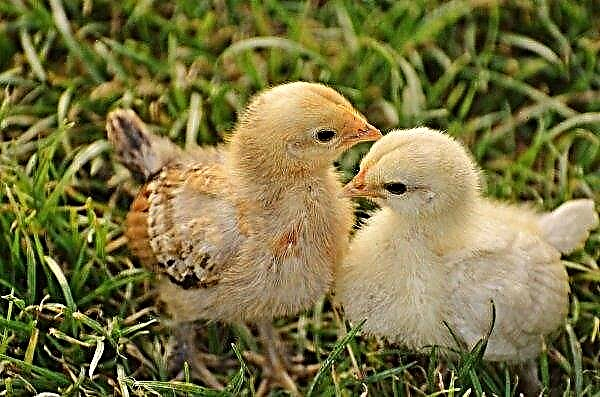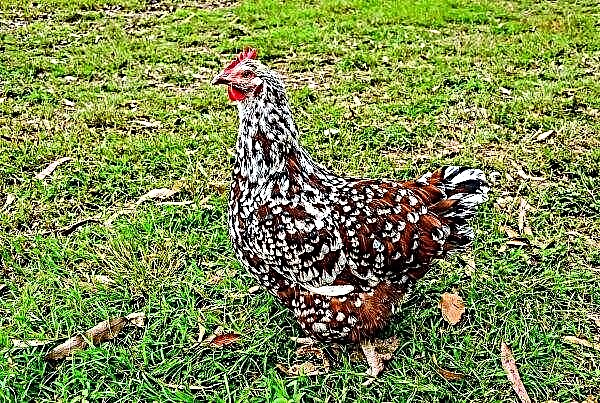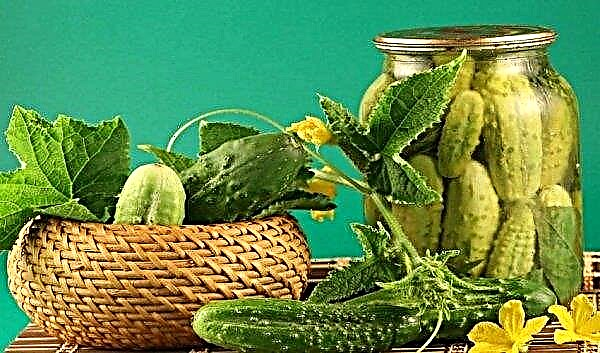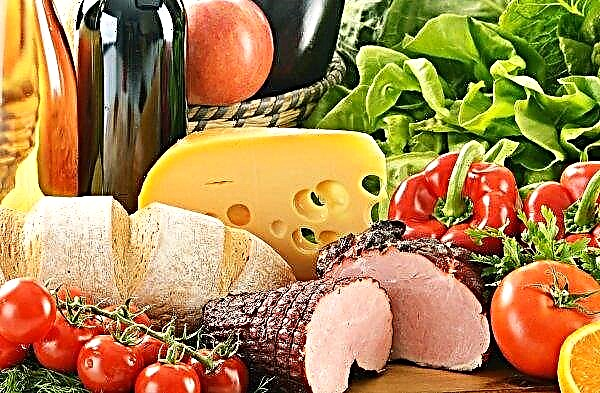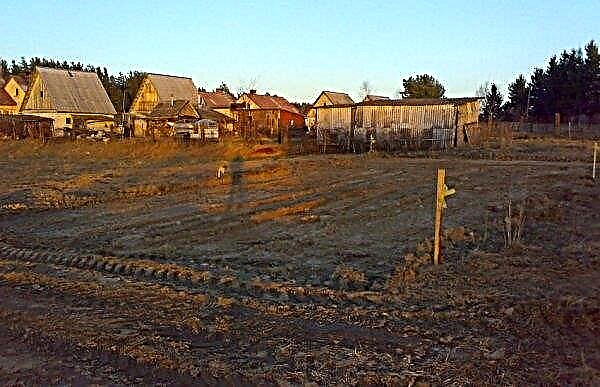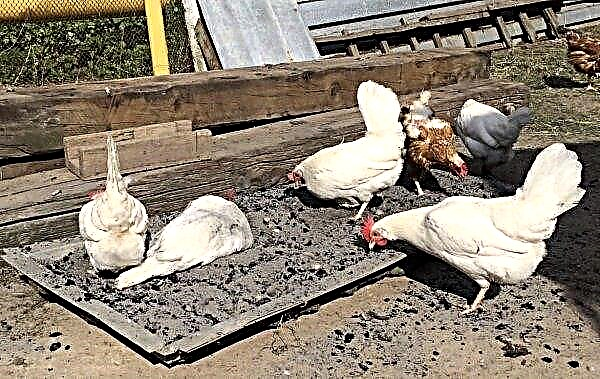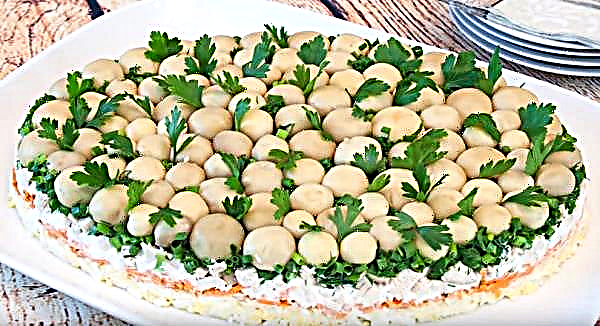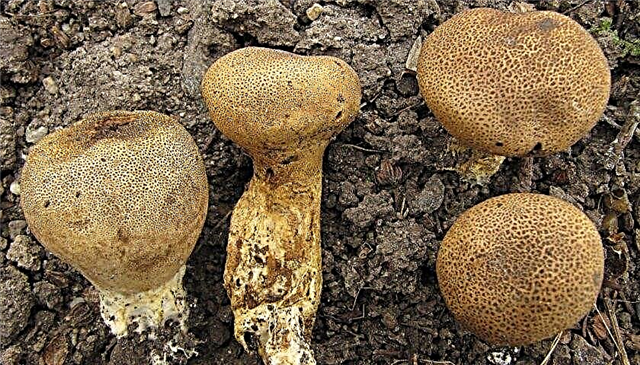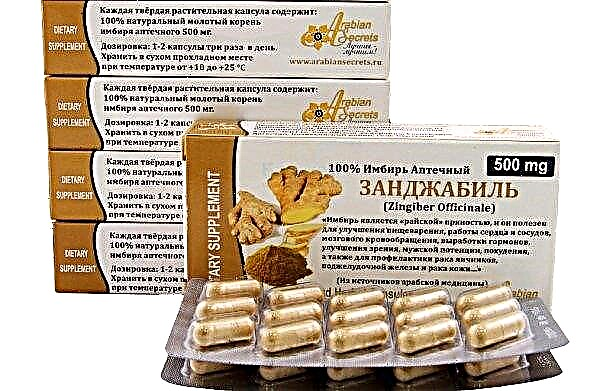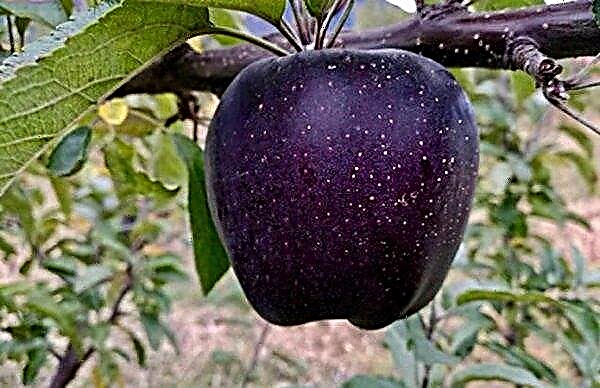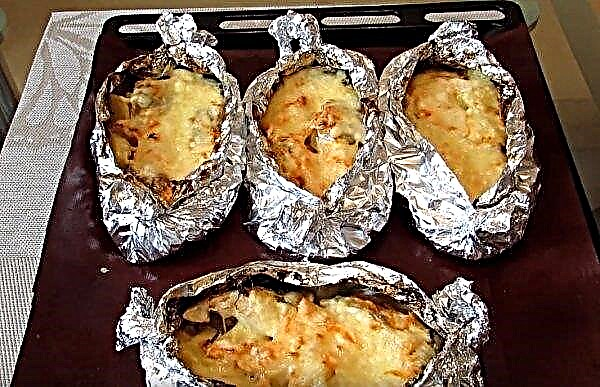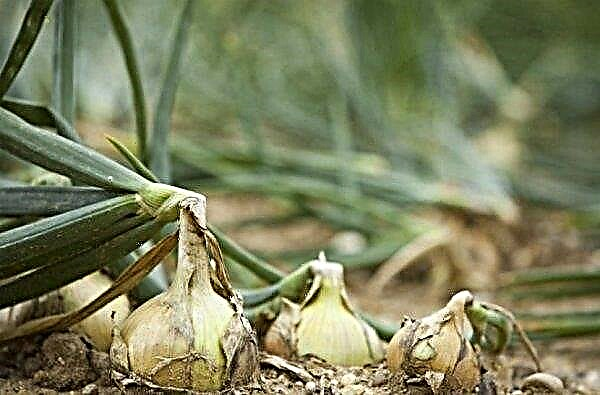Whiskers Vietnamese breed is gaining popularity in modern pig breeding. With a number of attractive features, these animals can become the basis of a profitable economy. The experience of breeders allows us to formulate recommendations on the content and feeding, as well as highlight the pros and cons of the breed. About this article.
Breed history
The scientific name for this breed is the Asian Viscous-bellied herbivore. Its homeland is Southeast Asia, and the word "Vietnamese" appeared due to the importation of pigs in the 80s of the last century from Vietnam. Initially, animals came to Canada and several European countries, and then quickly spread throughout America and Europe.
Breed description
There is an opinion that there are several varieties of the breed (for example, Korean). However, all the data about the difference between the Vietnamese pig and the Korean one indicate that these are two names of the same breed.
Did you know? The flexible nature and sociability, as well as the small size and cleanliness make this breed suitable as a companion animal.
Derived from Vietnamese dwarf mini piglets are called Chinese.
External characteristics
The characteristic features of the appearance will not allow you to confuse animals when buying. A hanging belly is already visible in small piglets.
What a Vietnamese pig looks like is indicated in the standard table:| Dimensions | from 70–80 to 150 kg |
| Color and bristles | up to 20 cm black shades |
| Head | flattened, in wild boars with fangs up to 15 cm |
| The ears | small standing |
| Neck | fat short |
| Torso | proportional |
| Chest and back | wide |
| Stomach | hanging, in adults can deliver to the ground |
| Legs | short |
There are also animals with small spots and slightly reddish (wild color). In stressful situations, the boar bristles are bristling like a mohawk.
Weight and dimensions
At birth, the weight of the pig is approximately 500 g. How much it will weigh in the future depends on the content and feeding. A piglet should weigh at least 30 kg at 6 months, and up to 75–80 kg at 7 months with a daily gain of 350–500 g.
This weight is already considered slaughter, and you can carry out slaughter. The maximum weight of a pig can be 140 kg, and a boar - 150 kg.
Productive qualities
The breed belongs to the bacon type of pork and shows high precocity. Puberty begins at 4 months in pigs and from 6 months at wild boars. From one pig, on average, they receive 24 pigs per year (taking into account the gestation period of 114–118 days). The meat of Vietnamese pigs is marbled, tasty and tender, with a low percentage of fat (2-3 fingers). The ribs are small in size.
The meat of Vietnamese pigs is marbled, tasty and tender, with a low percentage of fat (2-3 fingers). The ribs are small in size.
Advantages and disadvantages
The popularity of the breed is explained by a large number of advantages over traditional animals, but there are still several drawbacks.
- The following characteristics constitute the advantage of Vietnamese pigs:
- early ripening and fertility;
- easy care;
- calm nature and developed maternal instinct;
- excellent immunity;
- economical diet;
- cleanliness.
- Minor disadvantages include:
- sensitivity to drafts;
- may be offended by a lack of attention.
Recommendations for choosing good individuals
The thoroughbredness of the breed is the key to the success of keeping a Vietnamese pig. To choose the right pig, you should adhere to the following recommendations:
To choose the right pig, you should adhere to the following recommendations:
- breeding requires animals that are not in kinship, that is, you can’t take a pair from one litter;
- you need to check the weight of the pig at birth and growth with a 10-day interval;
- inspection of parents (with verification of the coincidence of the called age of the piglet and the condition of the sow);
- the presence of a characteristic "pug" head, widely set legs;
- it is better to take a piglet from a litter in which no more than 12 goals;
- a healthy animal has even bristles, active behavior and shiny eyes, a dry place under the tail.
To purchase thoroughbred animals, you should contact a proven farm with an excellent reputation.
Features of breeding and care
Despite the advertised ultralight care, for breeding it is necessary to observe a number of conditions that will allow you to get a healthy and numerous offspring.
Number of animals per corral
Thanks to its compact size, even in a small room, you can successfully breed Vietnamese breed. For two adult pigs, a 4.5-5 square meter machine will be enough. In the same area, you can settle a boar or a sow with piglets.
Content Terms and Conditions
The pigsty should be dry and warm, with good ventilation, but without drafts. In winter, it is necessary to provide heating. Heat is especially important for newborn piglets: the air temperature should not be lower than 20 ° C. The optimum ceiling height in the barn is 2.2 m. The best floor material is concrete, two-thirds of which is covered with a raised wooden platform to separate the sleeping area. The machines are limited by partitions made of metal or wood, and between them leave a wide passage for the trolley.
The best floor material is concrete, two-thirds of which is covered with a raised wooden platform to separate the sleeping area. The machines are limited by partitions made of metal or wood, and between them leave a wide passage for the trolley.
The room should have medium-sized windows. The sun's rays should pass into the pigsty, but not be too bright so as not to irritate the animals.
Walking organization
Animals need physical activity and fresh air, so it is very important to provide a platform for walking. It is advisable to proceed from 1 hectare of land per 1 sow. Vietnamese pigs will love the small mud bath, which is occasionally filled with water.
Important! For a “bath”, a pit up to 30 cm deep and 2 square meters in area is suitable.
If there are no trees on the site, logs should be dug to a depth of 1.5 m so that pigs can scratch them. A canopy is needed to protect against rain and hot sun.
What to feed
Proper feed supply is especially important for breeding. For fattening, keep a balance of feed consumption and weight gain to get profitable meat of excellent quality. A bacon-type pig (to which “flip flops” belong) cannot be overfed. Grain feed should include barley, wheat and rye, and it is better to refuse oats and corn, as they lead to excess body fat.
Grain feed should include barley, wheat and rye, and it is better to refuse oats and corn, as they lead to excess body fat.
Important! Compound feed should include no more than 10% of corn and oats.
In summer, the main part of the feeding is greens, part of which animals can find on their own on their own. Unlike traditional breeds, Vietnamese pigs do not tolerate roughage with a high percentage of fiber (straw, fodder beet varieties). The best choice for them would be the young hay of alfalfa or clover.
Adults
Grain food is recommended to be given in a crushed form with the addition of moisture. A kind of porridge is obtained by steaming a mixture of grain with boiling water and insisting it for about 10 hours (4.5 liters of grain - 9 liters of water). A bucket of such a mixture is enough for one feeding three pigs.
Fish oil and vitamins are also added to the diet. You can give pumpkin, carrots, zucchini, fresh boiled potatoes.
Young growth
Newborn piglets feed on mother's milk, which has almost all the necessary elements for initial growth. Only a shortage of copper and iron is noted, which can be avoided by injections of iron preparations.
After 7 days, the babies are fed calcium and phosphorus in the form of charcoal, chalk and red clay, and from 10 days give toasted barley. Adult type porridge with the addition of premixes or Prelaka is given starting from 2 weeks. By the first month of life, the piglets are gradually weaned from the sow's milk and eat on their own.
By the first month of life, the piglets are gradually weaned from the sow's milk and eat on their own.
For drinking, they use only pure drinking water, which needs to be warmed up a bit in winter. When fattening, they record in detail how much each animal eats, what kind of feed (including its own production) to determine the economic benefit of the process.
Signs of hunting, pregnancy and farrowing
Pigs of this breed early become sexually mature, some animals are active from 3 months.
Important! For healthy offspring, mating is recommended only when the animals reach a weight of 30–32 kg.
Also pay attention to such signs of hunting:
- restless behavior;
- characteristic discharge;
- swelling of the genital loop;
- when pressed on the croup, the pig freezes, not moving.
The pig walks pregnant 114–118 days. The period is affected by the total weight, as well as the number of piglets carried by the sow. A healthy pregnancy requires good nutrition, protection from stress and attentive care. How do you know if an animal is farrowing? About 5 days before the birth, the sow begins to “nest”, picking up hay.
A healthy pregnancy requires good nutrition, protection from stress and attentive care. How do you know if an animal is farrowing? About 5 days before the birth, the sow begins to “nest”, picking up hay.
Did you know? For the first time, a pig carries an average of 5 piglets, and in subsequent times, up to 14.
Before farrowing, the pig looks as follows:
- the milk shares of the animal increase;
- the nipples turn red;
- belly goes down.
If the pig refuses to eat, and clear colostrum is released from the nipple, the farrowing day has come. The birth should take place in a clean paddock with fresh hay and a heated corner for the piglets. A warm place is especially important if a pig gives birth in winter.
It is believed that additional help is not needed for the sow, however, the supervision of the owner facilitates the position of the animal and speeds up the process. On average, the animal pigs up to 5 hours, but this can stretch for half a day.
Diseases and their prevention
The breed's innate immunity to many diseases is noted by all breeders. Compared to traditional European breeds, Vietnamese pigs are very rarely affected. There are such diseases:
There are such diseases:
- helminth infection, ringworm. The animal must be isolated and used only preparations prescribed by the veterinarian, because each type of parasite has its own medicine;
- salmonellosis. A doctor's prescription includes serum with antibiotics, sometimes with the addition of sulfonamides;
- erysipelas. Especially dangerous for piglets. Treatment consists of taking serum, heart medications, and antibiotics;
- plague, anthrax and smallpox. Do not respond to treatment, almost always fatal.
The main cause of any disease is poor conditions and unsanitary conditions. You can not rely only on natural immunity – it is necessary to carry out prophylaxis and a veterinary examination at the first suspicion of a particular disease.
Basic preventive measures should always be timely:
- thorough cleaning of the room;
- rodent control;
- good food with vitamins;
- vaccination;
- deworming.
A doctor must be consulted if the animal:
- dramatically gaining or losing weight;
- suffers from diarrhea or vomiting (especially with blood);
- frequent discharge from the eyes or nose;
- the skin is covered with ulcers, abrasions and tumors;
- in behavior seizures, rales are observed.
 Vietnamese pigs have a number of significant differences from traditional breeds, so you need to make sure that the veterinarian is competent and familiar with these animals.
Vietnamese pigs have a number of significant differences from traditional breeds, so you need to make sure that the veterinarian is competent and familiar with these animals.Did you know? If the animal does not eat and lies, this may be one of the symptoms of salmonella or worm infection.
You can find out why the pig became bald after analysis: in addition to worms, depriving or lice, it can be a reaction to childbirth and lactation, vitamin deficiency.
Features of crossing Vietnamese pigs with other breeds
The Vietnamese breed can be crossed with others, however, the results of such breeding have worse characteristics than the original breed. Often you can find a hybrid with European landrace, which is bred to get larger animals.
Such piglets may be larger, but they lose their “Vietnamese” immunity and require more high-calorie nutrition. The life span of the hybrid is also much shorter, already at five years old animals are decrepit and not suitable for the production of offspring.
The Vietnamese breed has undeniable advantages for private and farm breeding. To obtain the stated results, it is necessary to adhere to proper feeding and conditions.

